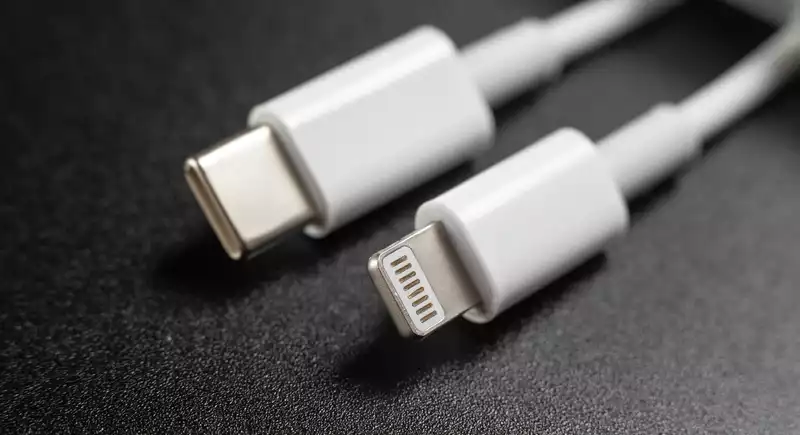Apple rarely goes with the flow. While competitors may try to go in one direction, Apple usually prefers to do things its own way. This is especially true when it comes to charging, and it insists on its own connection methods, such as Lightning.
However, Apple has eliminated Lightning in many other places and adopted USB-C for MacBooks and iPads. The latest USB-C Apple device is the $499 iPad mini 6. Nine years after its debut, Lightning still holds the upper hand on the iPhone. Frankly, it's time for Apple to finally discontinue Lightning.
Lightning first debuted as part of the iPhone 5 in September 2012. At the time, the majority of the cell phone industry was still using micro USB, so Lightning had a distinct advantage: not only was Lightning symmetrical, but it did not require a specific method of connection. It was also speculated that the Lightning connector was more robust and would give Apple an advantage in compatibility with docks and speaker systems.
There was also speculation that Apple would retain control of the accessory supply chain, since microUSB is an open standard and can be used by almost anyone. However, Lightning must be licensed directly from Apple itself.
However, as the cell phone industry switched to USB-C, it can now enjoy the same benefits as Lightning without the licensing issues. More or less.
In 2015, just three years after the launch of Lightning, Apple launched its MacBook series with USB-C. This was a bit of a shocking move, as USB-C was still in its infancy and the change from full-size USB ports had yet to take off. In fact, the first USB-C phones were not released until the month after Apple announced its new MacBook series.
However, Lightning was still around; while the MacBooks rely solely on USB-C to this day, Apple continues to use Lightning for the iPhone, iPad, and other related products. 3rd generation iPad with USB-C in 2018. Pro until its release.
In other words, the 3rd generation iPad Pro has improved connectivity to docks, external displays, Ethernet, and everything else USB-C has to offer. However, this change is exclusive to the iPad Pro, which Apple has always tried to sell as a laptop alternative.
Then in 2020, the iPad Air was redesigned to include a USB-C port.
The new $499 iPad mini 6 is now available, but given that it does not support the Magic Keyboard, it should never replace a laptop.
It is still a very small iPad, but it has a USB-C connection instead of Lightning. Why, though, giving the iPad mini 6 the potential to be a more multifunctional device, it is not clear. However, it does indicate that it is time for Apple to ditch the aging Lightning connector for good.
Apple's plans for USB-C are not clear, but some Apple products utilize USB-C while others rely on the nine-year-old Lightning. It has now reached a point where it is particularly confusing.
Previously, it was laptops and iPad Pros that had USB-C, which was very simple. However, throwing the USB-C iPad mini into the mix while sticking with Lightning on the all-new entry-level iPad 9 could cause confusion.
Meanwhile, rival smartphones are developing USB-C phones that can charge much faster than the iPhone. For example, the OnePlus 9 Pro can charge to 99% in 30 minutes on a 65W USB-C charger, and the new Xiaomi 11T Pro can charge to 100% in just 23 minutes on a 120W charger.
Even Apple's biggest rival, Samsung, is rumored to be bringing back 45W charging with its Samsung Galaxy S22 series. The iPhone 13, on the other hand, is limited to 20W with its USB-C to Lightning charger.
It is currently possible that Apple will develop a Lightning adapter or MagSafe charger that can charge faster, but it is also possible that USB-C has already achieved this.
Rumors suggest that there will never be a USB-C iPhone, and that Apple intends to stick with Lightning until it can develop a reliable portless iPhone that can charge and connect wirelessly for all charging and connection.
While certainly an interesting idea, a portless iPhone is still a long way off. It is not as if a portless phone is a lofty goal far off in the distance. It does exist, but generally only as a proof of concept, not as a commercially available device. The only question is whether Apple can make it happen on a large scale and with the kind of performance that people expect from a $1,000 phone.
Next year, when the iPhone 14 is released, we may see an iPhone without ports. Or Apple may still rely on Lightning, but I think that would be a mistake.
At that stage, Lightning is 10 years old and, by technical standards, quite old. Even Apple's old 30-pin dock connector was replaced before it reached that particular standard. Thus, if Apple cannot achieve a portless iPhone by next year, it will have to throw in the towel and embrace USB-C.
Even if it remains a transient connector until the port can be eliminated for good.
.









Comments